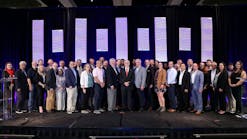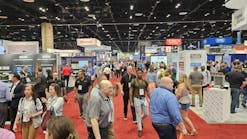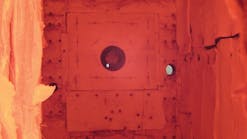Earlier in my career, I served as president of Marshall Engineered Products Co. (MEPCO), successor to the original C.A. Dunham Co. (later Dunham-Bush) and heir to a rich history in the development of steam heating technology. The story of Dunham’s contribution to steam heating begins around the turn of the 20th century, when a young engineer at the Iowa Soldier's Home—Clayton A. Dunham—became frustrated with the steam technology then available. Dunham began working in Dave Lennox's workshop in Marshalltown, Iowa (it was in that workshop Lennox built the first riveted-steel furnace, starting his company on the way to becoming the HVAC giant Lennox Industries of today).
Dunham developed the first successful thermostatic steam trap—the Dunham Fluid Thermostatic Radiator Trap—in 1903 and started the C.A. Dunham Co. to manufacture and sell it. For the next decade, Dunham’s trap was the only commercially available device that automatically differentiated between steam, water, and air at various temperatures. His trap significantly improved the performance of the steam heating systems then in use, as it prevented the short-circuiting of steam between supply and return piping, allowing higher velocities of low-pressure steam to reduce pipe size and heat-up time.
As I mentioned in my July 22, 2014, blog post, after 20-plus years of growth and prosperity, Dunham recognized he needed top technical talent to take his company to the next level, so he wrote to Purdue University, saying he wanted to hire its top engineering student sight unseen. In 1925, David Nelson Crosthwait Jr., who had received both bachelor’s and master’s degrees in engineering from Purdue, stepped off the train at the Marshalltown station to be welcomed by Dunham and, incidentally, became the first black American to ever live and work in that town.
For the next five years, Crosthwait served as director of research laboratories for C.A. Dunham Co. and received 39 HVAC-related U.S. patents, many of them associated with steam heating. For the next 41 years, from 1930 to 1971, he served as technical advisor to the company, which had become Dunham-Bush Inc. through the 1956 merger of C.A. Dunham Co. and Bush Manufacturing Co. (Bush, founded in 1906, was a West Hartford, Conn.-based manufacturer best known for pioneering air-conditioning equipment using direct-expansion evaporators and air-cooled and evaporative condensers). Crosthwait then returned to his alma mater to teach steam-heating theory and control. He received an honorary doctorate from Purdue in 1975 and died in 1976. Although widely regarded as one of America's 25 most notable black scientists, with 80 international patents, he is perhaps best known for his design of the steam heating system for Radio City Music Hall in New York City.
If you want to learn more about Crosthwait, he’s listed in several references, including “African American Inventors” by Otha Richard Sullivan and “American Men and Women of Science: Physical and Biological Sciences v. 1.”








